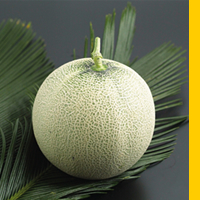1. INEGI, 2007. Anuario Estadístico del Comercio Exterior de los Estados Unidos Mexicanos. México. 2006. Exportación en dólares. pp. 636.
2. Zitter, T. A., D. L. Hopkins y C. E. Thomas, 1996. Compendium of Cucurbit Diseases. APS Press, St. Paul, Minn.
3. Núñez-Palenius H. G., Hopkins, M., y Cantliffe, D. J., 2006. Powdery Mildew of Cucurbits in Florida. EDIS. IFAS. University of Florida.
4. Wien, H.C.,1997. “The Cucurbits: Cucumber, Melon, Squash and Pumpkin”. En Wien, H.C., ed, The Physiology of Vegetable Crops. CAB INTERNATIONAL, Nueva York, NY, pp. 345-386.
5. Robinson, R. W., y D. S. Decker-Walters, 1999. Cucurbits.CAB INTERNATIONAL, Wallingford, Nueva York, N.Y. pp. 226.
6. Paris, H. S. y R. N.Brown, 2004. “Gene List for Cucurbita species, 2004”. CGC Report núm. 27.
7. Pitrat, M., 2002. Gene List 2002 for Melon. CGC Report núm. 25.
8. Wehner, T. C., 2007. Gene List for Watermelon. CGC Report núm. . 30.
9. Xie, J. y Wehner, T.C., 2001. Gene List 2001 for Cucumber. CGC Report núm. 24.
10. Pitrat, M., M. Chauvet y C. Foury., 1999. Diversity, History and Productivity of Cultivated Cucurbits. En Abak, K. and Büyükalaca, ed, First International Symposium on Cucurbits, Adana, Turkey, pp. 21-28.
11. Dane, F., 1991. “Cytogenetics of the Genus Cucumis”. En P. Gupta, Tsuchiya, T, ed, Chromosome Engineering in Plants: Genetics, Breeding, Evolution, vol. parte B. Elsevier, Amsterdam, pp. 201- 214.
12. Ezura, H., 1999. “How Biotechnology Can Contribute to Conventional Breeding in Melon”. Acta Horticulturae. 492: 135-148.
13. Guis, M., J. P. Roustan, C. Dogimont, M. Pitrat, y J. C. Pech., 1998. “Melon Biotechnology”. Biotechnology & Genetic Engineering Reviews. 15: 289-311.
14. Núñez-Palenius H. G, M. Gómez-Lim, N. Ochoa-Alejo, R. Grumet, G. Lester, y D. J. Cantliffe, 2008. “Melon Fruit: Genetic Diversity, Physiology and Biotechnology Features”. Critical Reviews in Biotechnology. 19:1-43.
15. Núñez-Palenius, H., D. J. Cantliffe, D. J. Huber, J. Ciardi, H. J. Klee, 2006. “Transformation of a Muskmelon ‘Galia’ Hybrid Parental Line (Cucumis melo L. var. reticulatus Ser) with an Antisense acc Oxidase Gene”. Plant Cell Reports. 25: 198-205.
|
 |